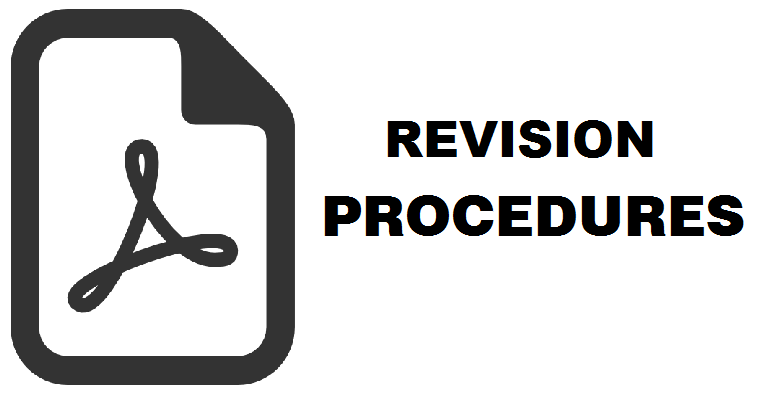Simulasi Perubahan Penggunaan Lahan Akibat Pembangunan Kawasan Industri Kendal (KIK) Berbasis Cellular Automata
Muhammad Nur Sadewo(1*), Imam Buchori(2)
(1) ATR/BPN Kantor Pertanahan Kabupaten Badung, Bali
(2) Magister Pembangunan Wilayah dan Kota, Universitas Diponegoro, Semarang
(*) Corresponding Author
Abstract
Keywords
Full Text:
PDFReferences
Anderson, G., & Ge, Y. (2004). Do Economic Reforms Accelerate Urban Growth ? The Case of China. Urban Studies, 41(4100000732), 2211–2230.
Bogaert, P., & Dendoncker, N. (2007). Spatial analysis and modelling of land use distributions in Belgium Spatial analysis and modelling of land use distributions in Belgium. Computers, Environment and Urban Systems, 31(April 2015), 188–205. https://doi.org/10.1016/j.compenvurbsys.2006.06.004
Camagni, R., Gibelli, M. C., & Rigamonti, P. (2002). Urban mobility and urban form: the social and environmental costs of different patterns of urban expansion. Ecological Economics, 40(2), 199–216. https://doi.org/http://dx.doi.org/10.1016/S0921-8009(01)00254-3
Cohen, B. (2004). Urban Growth in Developing Countries : A Review of Current Trends and a Caution Regarding Existing Forecasts. World Development, 32(1), 23–51.
Dadras, M., Shafri, H. Z. M., Ahmad, N., Pradhan, B., & Safarpour, S. (2015). Spatio-temporal analysis of urban growth from remote sensing data in Bandar Abbas city, Iran. Egyptian Journal of Remote Sensing and Space Science, 18(1), 35–52. https://doi.org/10.1016/j.ejrs.2015.03.005
Damayanti, R. (2010). Pertumbuhan Fisik Kota Karena Pengaruh Industrialisasi , studi kasus Kota Ahmedabad - India. Humanisme, Arsitektur Dan Perencanaan.
Danoedoro, P. (2006). Extracting Land-Use Information Related to Socio-Economic Function From Quickbird Imagery : A Case Study of Semarang Area, Indonesia. In Map Asia, Bangkok (Vol. 1). Bangkok.
Guan, D., Li, H., Inohae, T., Su, W., Nagaie, T., & Hokao, K. (2011). Modeling urban land use change by the integration of cellular automaton and Markov model. Ecological Modelling, 222(20–22), 3761–3772. https://doi.org/10.1016/j.ecolmodel.2011.09.009
Han, H., Yang, C., & Song, J. (2015). Scenario Simulation and the Prediction of Land Use and Land Cover Change in Beijing, China. Sustainability, 7, 4260–4279. https://doi.org/10.3390/su7044260
Hosseinali, F., Alesheikh, A. A., & Nourian, F. (2013). Agent-based modeling of urban land-use development , case study : Simulating future scenarios of Qazvin city. Cities, 31, 105–113. https://doi.org/10.1016/j.cities.2012.09.002
Leao, S., Bishop, I., & Evans, D. (2014). Simulating Urban Growth in a Developing Nation ’ s Region Using a Cellular Automata- Based Model. Journal of Urban Planning and Development, (July). https://doi.org/10.1061/(ASCE)0733-9488(2004)130
Liu, Y. (2009). Modelling Urban Development with Geographical Information System and Cellular Automata. Boca Raton: CRC Press.
Liu, Y., & He, J. (2009). Developing a web-based cellular automata model for urban growth simulation, 7492, 1–8. https://doi.org/10.1117/12.838657
Maria, R., Omrani, H., Charif, O., & Gerber, P. (2014). Land use changes modelling using advanced methods : Cellular automata and artificial neural networks . The spatial and explicit representation of land cover dynamics at the cross-border region scale. Applied Geography, 53, 160–171. https://doi.org/10.1016/j.apgeog.2014.06.016
Milad, M., Ming, Y., Firuz, M., & Hanan, Z. (2016). The simulation and prediction of spatio-temporal urban growth trends using cellular automata models : A review. International Journal of Applied Earth Observations and Geoinformation, 52, 380–389. https://doi.org/10.1016/j.jag.2016.07.007
Pawan. (2016). Urbanization and Its Causes and Effects : A Review. International Journal of Research and Scientific Innovation (IJRSI), III(Ix), 110–112. https://doi.org/10.1038/sdata.2016.34.ISSN
Pratomoatmojo, N. A. (2014). LanduseSim sebagai aplikasi pemodelan dan simulasi spasial perubahan penggunaan lahan berbasis Sistem Informasi Geografis dalam konteks perencanaan wilayah dan kota. Seminar Nasional Cities, 69–80.
Purwadhi, S.H., (2001). Interpretasi Citra Digital. Jakarta : Grasindo.
Santé, I., García, A. M., Miranda, D., & Crecente, R. (2010). Landscape and Urban Planning Cellular automata models for the simulation of real-world urban processes : A review and analysis. Landscape and Urban Planning, 96, 108–122. https://doi.org/10.1016/j.landurbplan.2010.03.001
Tian, L., Ge, B., & Li, Y. (2017). Impacts of state-led and bottom-up urbanization on land use change in the peri-urban areas of Shanghai: Planned growth or uncontrolled sprawl? Cities, 60, Part B, 476–486. https://doi.org/http://dx.doi.org/10.1016/j.cities.2016.01.002
Torrens, P. M. (2003). Automata ‐ based models of urban systems. In In Advanced Spatial Analysis, P. Longley & M. Batty (Eds.) (pp. 61–79). Redlands: ESRI Press.
Wardana, D. W., Danoedoro, P., & Susilo, B. (2016). Kajian Perubahan Penggunaan Lahan Berbasis Citra Satelit Penginderaan Jauh Resolusi Menengah Dengan Metode Multi Layaer Perceptron dan Markov Chain. Majalah Geografi Indonesia, 30(1), 9–18.
Wolfram, S. (1984). Cellular automata as simple self-organizing systems. Elsevier Science Publishers B.V. Retrieved from http://cds.cern.ch/record/140047
Article Metrics
Refbacks
- There are currently no refbacks.
Copyright (c) 2018 Majalah Geografi Indonesia

This work is licensed under a Creative Commons Attribution-ShareAlike 4.0 International License.
Volume 35 No 2 the Year 2021 for Volume 39 No 1 the Year 2025
ISSN 0215-1790 (print) ISSN 2540-945X (online)








